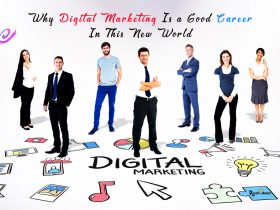As we approach a brand new year, it’s almost surreal to realize that we’re bidding farewell to 2022. However, we believe that now is the perfect moment to discuss some essential technology subjects that you need to take into account when preparing for 2023. We’ve condensed the list down to five key topics that you should keep in mind while mapping out your plans for the upcoming year.
Here are five technology considerations that you should keep in mind as you plan for 2023:
1.Cybersecurity
Cybersecurity refers to the protection of computer systems, networks, and data from theft, damage, or unauthorized access. It involves a set of practices, technologies, and processes that aim to prevent, detect, and respond to cyber attacks and other online threats. Cybersecurity threats can include malware, phishing attacks, hacking attempts, ransomware, and more.
Ensuring robust cybersecurity is essential for businesses of all sizes and industries, as a single cyber attack can result in financial losses, reputational damage, and legal repercussions. Cybersecurity measures can include firewalls, antivirus software, encryption, two-factor authentication, employee training, and regular security assessments and audits.
As cyber threats continue to evolve and become more sophisticated, it’s crucial for businesses to stay up to date on the latest cybersecurity trends and best practices. Regularly updating software and systems, implementing access controls, and having a plan in place to respond to cyber attacks can help businesses mitigate risk and protect against cyber threats.
2.Cloud Computing
Cloud computing refers to the delivery of computing services, including servers, storage, databases, software, and analytics, over the internet. Instead of hosting these services on local servers or personal computers, cloud computing allows businesses and individuals to access computing resources remotely and on-demand through a provider’s network of servers.
Cloud computing can offer several benefits for businesses, including cost savings, scalability, flexibility, and increased efficiency. By leveraging cloud-based solutions, businesses can reduce the need for physical hardware, IT maintenance, and upgrades, as well as access resources as needed and pay only for what they use.
Cloud computing can also enable businesses to work remotely and collaborate more effectively, as teams can access files and applications from anywhere with an internet connection. Additionally, cloud-based solutions can provide better disaster recovery and data backup capabilities, as data is stored in secure, redundant data centers.
3.Artificial Intelligence (AI) and Machine Learning (ML):
Artificial Intelligence (AI) and Machine Learning (ML) refer to the ability of machines to perform tasks that would typically require human intelligence, such as learning, problem-solving, decision-making, and language understanding.
AI and ML technologies are becoming increasingly prevalent in businesses of all sizes and industries, as they can improve processes, decision-making, and customer experience. For example, chatbots powered by natural language processing (NLP) can handle customer inquiries and support, while predictive analytics can help businesses forecast future trends and identify opportunities.
ML algorithms enable computers to learn and improve from experience without being explicitly programmed. This allows businesses to automate routine tasks, such as data analysis and processing, and make more accurate predictions and decisions based on patterns and insights.
AI and ML technologies can also enable businesses to provide personalized experiences for customers, such as product recommendations and tailored marketing messages. This can lead to increased customer satisfaction and loyalty.
As AI and ML continue to evolve, businesses must stay up to date on the latest trends and best practices. Investing in AI and ML tools and expertise can help businesses stay competitive in an increasingly data-driven and automated world.
4.Internet of Things (IoT):
The Internet of Things (IoT) refers to a network of physical devices, vehicles, appliances, and other items embedded with sensors, software, and connectivity capabilities that enable them to exchange data and communicate with each other over the internet.
IoT technology can provide real-time data and insights that businesses can use to optimize operations, enhance customer experiences, and create new products and services. For example, IoT sensors in manufacturing equipment can collect data on machine performance and predict when maintenance is needed, while IoT devices in homes can monitor energy consumption and adjust settings to save costs.
IoT can also enable businesses to gain valuable insights into customer behavior, such as preferences, purchase history, and usage patterns. This can allow businesses to offer personalized experiences and develop new products and services that better meet customer needs.
However, IoT also poses unique security risks, as it creates new entry points for cyber attacks and data breaches. Businesses must implement robust security measures, such as encryption and authentication, to protect against these risks and ensure the privacy and security of sensitive data.
5.Digital Transformation:
Digital transformation refers to the process of using digital technologies to fundamentally change how businesses operate, engage with customers, and deliver value. It involves the integration of digital technologies into all areas of a business, including operations, customer experience, and business models.
Digital transformation can enable businesses to streamline operations, increase efficiency, reduce costs, and enhance customer experiences. For example, businesses can use digital tools and platforms to automate routine tasks, optimize supply chain management, and provide personalized experiences for customers.
Digital transformation can also create new revenue streams and business models, such as subscription-based services, digital marketplaces, and e-commerce platforms. These new business models can enable businesses to reach new customers and markets and create new sources of revenue.
However, digital transformation also requires significant investment in technology, infrastructure, and talent, as well as a cultural shift toward a more digital-first mindset. It also requires careful planning and management to ensure successful adoption and integration of digital technologies.
Conclusion
Technology continues to rapidly evolve and shape the way businesses operate and deliver value to customers. In order to stay competitive and succeed in today’s digital landscape, businesses must stay up to date on the latest technology trends and best practices, and be willing to invest in new technologies and expertise.
Key technology considerations for businesses in 2023 include cybersecurity, cloud computing, artificial intelligence and machine learning, and the Internet of Things. Each of these technologies has the potential to improve operations, enhance customer experiences, and create new business opportunities, but also poses unique risks and challenges that must be carefully managed.
Overall, businesses that embrace and leverage these technologies will be better equipped to navigate the challenges and opportunities of a rapidly evolving digital landscape, and create sustainable success and growth in the years to come.

















Leave a Reply